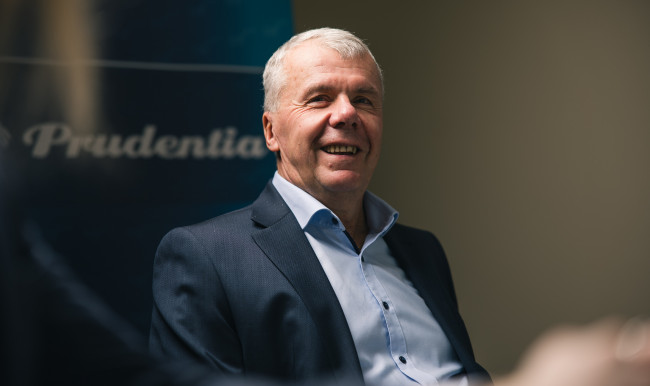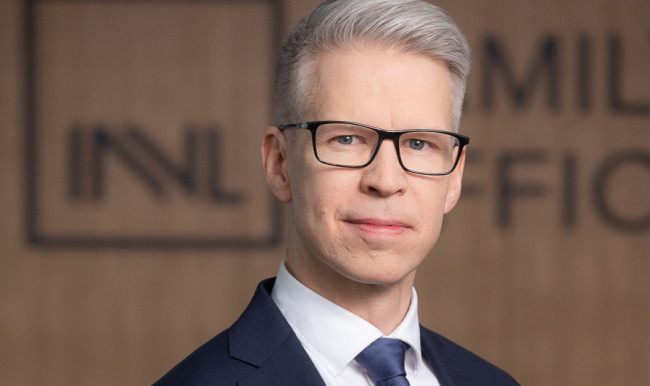
Dance around two vital resources
Peeter Koppel
A quarter of a century in the financial markets
For more than a decade we lived in a world where capital was free – or at least almost free. This led to the situation where everybody was printing money so that the ever-increasing money supply was forced to seek higher risks and lower returns. Investors were prepared to pay more and more for each future profit unit of companies. Until last year, this drove corporate value higher and higher. The moment of truth arrived when the cost of capital started to go up because suddenly it was possible to invest money (almost) risk-free. Moreover, the rate of return at which money could be invested risk-free also increased at a pace for which it is difficult to find a precedent in history. And last but not least, this process was not local. Just like the inflation that had caused this process.
All in all, the two-digit inflation in the developed world and the record-breaking growth in the cost of capital meant the most significant change of the generation where book wisdom led us to assume that everything that was worth a lot will be worth less in the future, and everything that was worth less will be worth even less in the future. But this was not quite the case, because the rapid rise in interest rates led to a situation where financial intermediaries were able to keep their value well. The society was and still is angry about the banks' massive profits, and now and then someone recommended arbitrarily that the state should start confiscating things, but this remained talk. It can also be very clearly expected that the share of non-performing loans will also increase in response to increasingly complex economic conditions, and perhaps the market will also force banks to pay more interest to depositors in the future? The conditional approach here is due to the fact that already overcapitalised banks are benefiting from interest rate hikes which has allowed them to create even bigger buffers. Therefore, in this situation it is unlikely that in a cooling economy the banks' gratitude to depositors would increase for other than marketing purposes – and these campaigns would be temporary.
The fact that in the top ten of the ranking of most valuable companies are three usual suspects, sorry, banks, is not particularly surprising in this context. Likewise, it is not surprising that a slightly smaller bank was able to increase its value nicely. Obviously, something very radical would have to happen for the banks to stop dominating the top 10. So far, however, it is no wonder – money is the world's most important resource – one might even say that credit is the world's most important resource, and the environment has been exceptionally favorable for those who control this resource. Top 5 by EBITDA in Estonia are banks. This says a lot, if not all.
Another important resource worthy of a “dance” is, of course, energy. A piece of the energy company owned by taxpayers was listed on the stock exchange, and at least it is now clearer to whom it belongs. The fact that since the end of 2021 we have a listed company with scale and/or capitalization increased the credibility and trustworthiness of the entire stock exchange. Recently, however, it seems that the honeymoon of green energy is over and it is increasingly admitted that an important reason for the energy crisis is energy policy, which did not understand an important law – the transition to new energy sources requires that there is enough so-called old and black/brown energy during the transition period and at a tolerable price. The end of the honeymoon has triggered a sales wave of green energy companies, while black/brown energy companies bathe in money. We in Estonia have no direct winners from this.
The third trend that can be seen in TOP101 is the capacity of IT companies to increase their value. This is a global trend. Since the cost of capital has increased, one could assume that IT companies are among the losers. However, as we are gradually going through a small revolution with AI in the background, this sector is doing well and its share in our gross domestic product will hopefully continue to grow. Why hopefully? Because we desperately need growth engines, as the increased cost of capital we mentioned has clearly damaged that part of our manufacturing industry that is related to the real estate markets of our main export partners. And the situation is unlikely to improve rapidly. So, let's keep fingers crossed that in a year's time the mood is not any more depressed than it is now. And when you look at the TOP101 ranking, there is no need for panic. Growth is bigger than losses, and in an inflationary situation we have coped surprisingly well.


